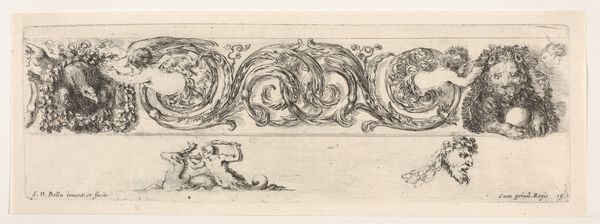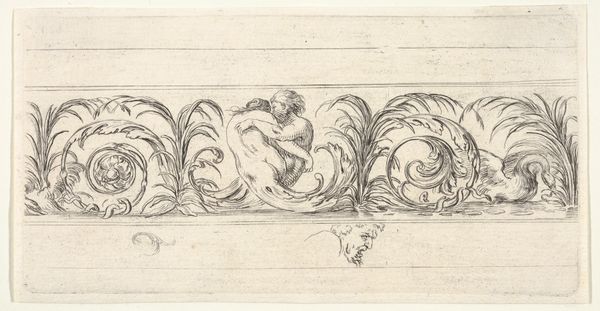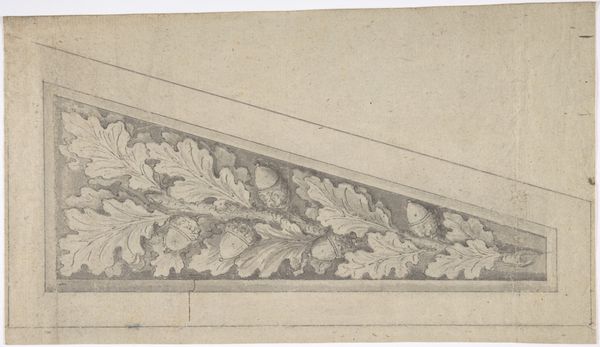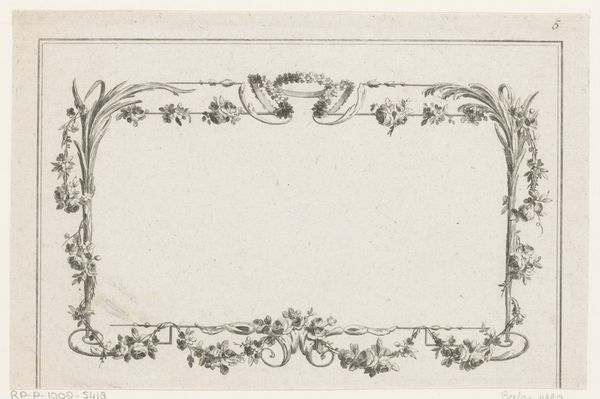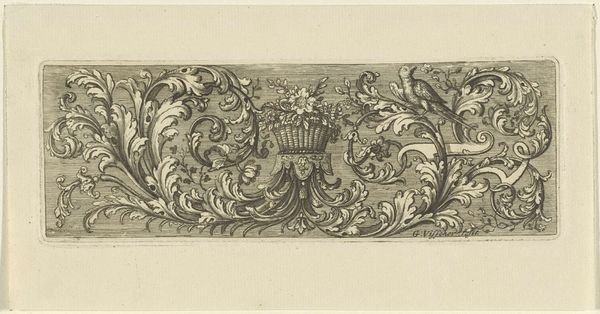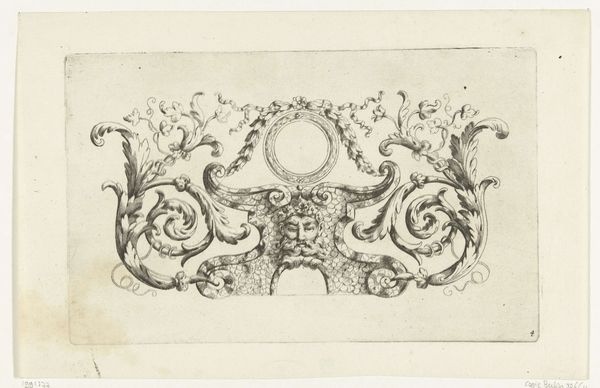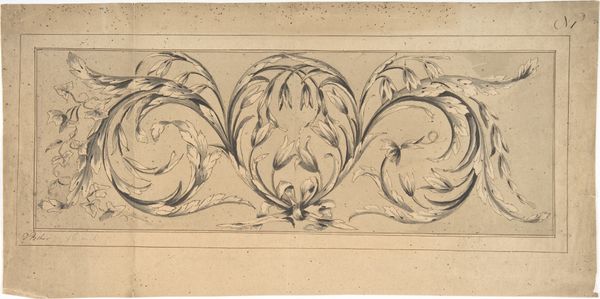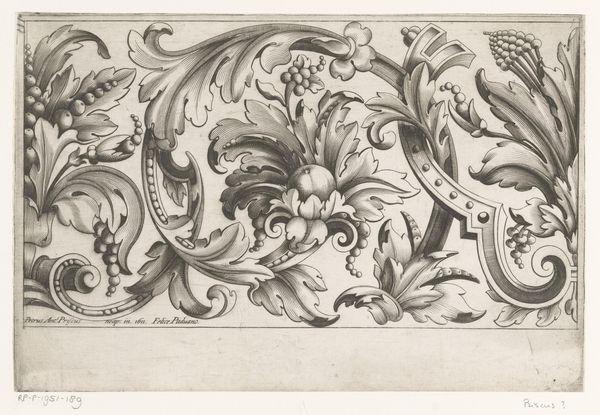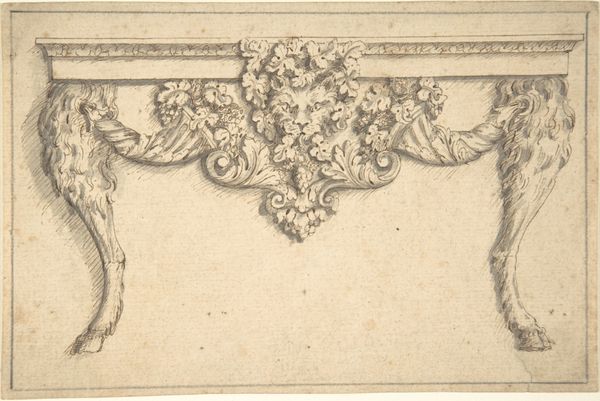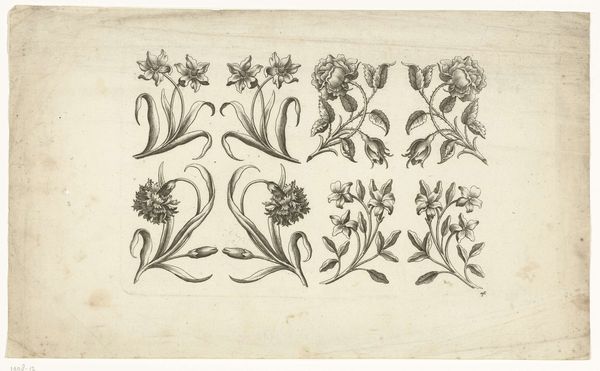
Border Design from a Classical Frieze, Decorated with Vines and Leaves 1776 - 1779
0:00
0:00
drawing, print, pencil
#
drawing
#
neoclacissism
# print
#
classical-realism
#
form
#
geometric
#
pencil
#
line
Dimensions: sheet: 5 5/8 x 12 5/8 in. (14.3 x 32.1 cm)
Copyright: Public Domain
Editor: We are looking at "Border Design from a Classical Frieze, Decorated with Vines and Leaves," a drawing by Thomas Hardwick created between 1776 and 1779. It has an elegant and symmetrical design. What can you tell me about it? Curator: This drawing embodies Neoclassical ideals, doesn't it? The focus on idealized forms and geometric balance speaks volumes. But consider what was happening in the late 18th century. This wasn't just about aesthetics; Neoclassicism was consciously adopted by elites as a means to establish order and legitimize authority, wasn't it? Editor: I hadn't thought about it in that way. So, the vines and leaves… are they purely decorative? Curator: Nothing is purely decorative, I would argue. The natural motifs, meticulously rendered, can be interpreted in dialogue with the intellectual framework of the Enlightenment. Were they attempting to claim power over the natural world, perhaps, by controlling and refining these depictions? Editor: That's fascinating. So it’s not simply a pretty design, but a reflection of societal power structures and intellectual movements? Curator: Precisely. Art never exists in a vacuum. Consider the political turmoil of the American and French Revolutions during this period and the re-emergence of classicism as the art of enlightened power. Can you see a way in which the drawing itself is complicit in conveying particular historical messages? Editor: I guess seeing art this way helps bring historical narratives of politics, race, and gender to the forefront in unexpected ways. It helps dismantle the notion of art existing separately from everything else. Curator: Exactly! This lens makes us see art as inherently embedded within a larger social narrative, enabling us to critically engage with both past and present ideologies.
Comments
No comments
Be the first to comment and join the conversation on the ultimate creative platform.
